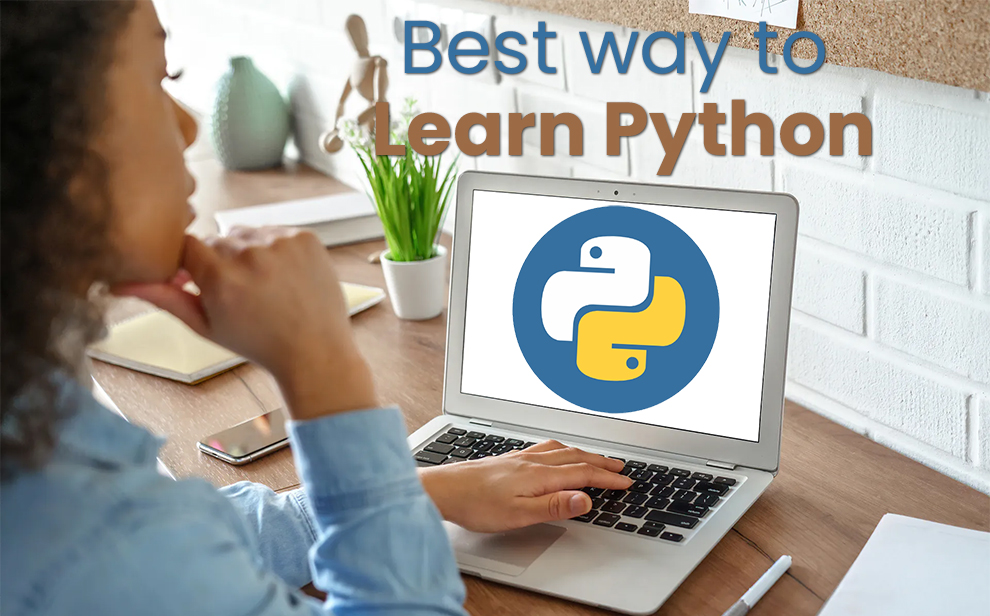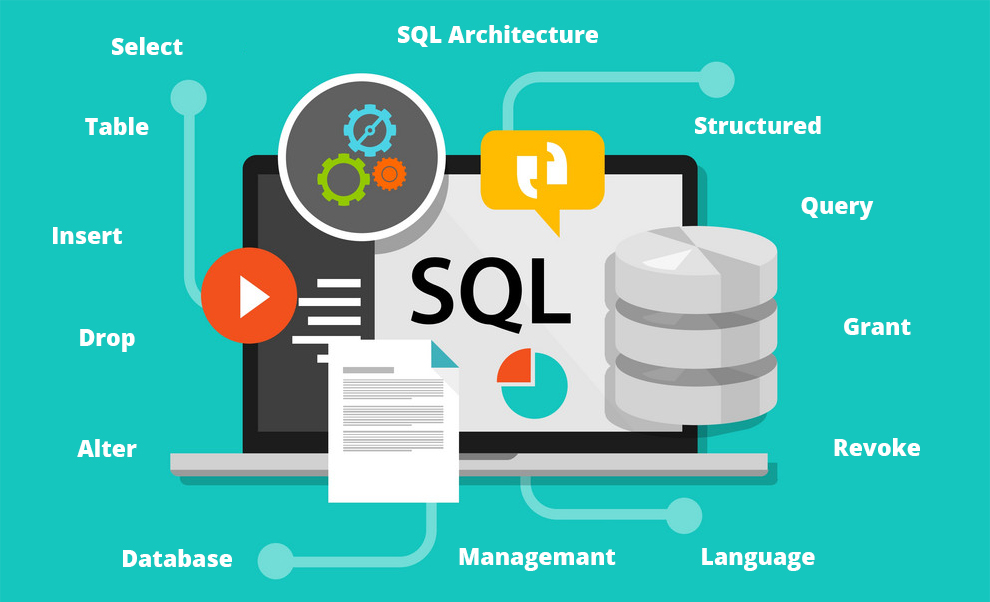What Is Python?
Designed by Giodo Van Rossum in the 1980s and finally released in 1991, Python is a high-level programming language popular among developers and data scientists alike.
Python is robust and more versatile than most other common programming languages as it is a multi-paradigm coding language that implements dynamic typing. It follows the Object-Oriented programming approach and comprises a syntax that is extremely user-friendly and heavily aligned towards the English Language.
The design of Python codes put significant emphasis on code readability and distinct indentation, the two features among many that have made it so popular in the coding community.
Jump To
- Python Uses
- Quickest Way To Learn Python (Step Wise Guide)
- Why Can’t I Make Progress With Python?
- Tips To Learn Python
- Why Choose Python Over Other Languages
- FAQs
- EndNote
This article will look at the easiest way to learn Python.
Applications Of Python
Before we tell you the best way to learn Python online, let’s understand where is Python used?
- Software developers often use Python to create workflows.
- Python can be used for server-side website application development.
- Python makes it easier to manage databases by directly accessing them for file extraction and modification.
- The most common language used in Machine Learning, Artificial Intelligence and Data Science is Python. One of the primary reasons for using Python in these fields is because it can handle ‘Big Data.’ In addition, it has functions and libraries like ‘Pandas’, ‘IPython’ and ‘SciPy’, which can perform the most complex mathematical problems.
- Python can be used to visualize what applications will look like efficiently (rapid prototyping).
Learn Python The Right Way To Land Your Dream Job!
Thinking about learning Python from scratch and wondering what the best method to learn Python might be?
Here is your step by step guide that will walk you through the best way to learn Python for beginners:
1. Decide why you want to learn Python – Your purpose for learning Python should be clear. Suppose you picture yourself working as a Data Scientist. In that case, Data Analyst, ML or AI developer, Software Developer or just a competitive coder, then Python is the language you should opt for.
It is always better if the skill you are learning aligns with your line of work. Learn Python the right way and for the right reasons.
2. Evaluate your existing knowledge – It is important to know where you stand. If you have previous experience with Python or any other programming languages, then you should begin learning from an intermediate level.
If you have no experience, then opt for beginner-level tutorials. If you are an experienced Python developer who is learning it just to keep up with the latest features, you should start learning from advanced resources.
3. Practice daily – Practicing Python is the quickest way to learn Python by yourself. If you set aside about 2 to 3 hours daily for learning Python, you will excel at it in no time. You do not want breaks that last more than a day during your learning phase.
4. Know the key terms – The best way to learn Python online is to understand the common terms associated with python programming:
- Variables and data types – Datatypes in Python are containers for values that are also known as variables. Integer, String, Boolean, Float and Character are some of the most commonly used data types in Python.
- Objects and Classes – Classes are user-defined prototypes that contain the codes. Objects are an instance of a class. They are a collection of data, variables and coding statements.
- Lists, dictionaries, and sets – Lists in Python are ordered arrays that are dynamic in size and can be heterogeneous in nature (i.e., can contain more than one data type).
Dictionaries are similar to lists except that they are unordered. A set in Python is a non-homogenous, unordered data structure that is used to store data and is mutable.
- Basic operators – Operators are symbols that perform some sort of task or relate one variable to the other. Examples: arithmetic operators, relational operators, logical operators, bitwise operators, identity operators and conditional operators.
- String formatting – String formatting in Python is the method by which you can insert characters dynamically inside an existing string. The most common way of doing it is by using the ‘string-modulo operator – %.’
- Basic string operations – Basic string operations in Python are pre-declared functions that are used to manipulate a string.
For example, capitalize () converts the entire string to the upper case while count() function finds the number of times a specific value appears in a string. The easiest way to learn Python fully is to be aware of the basic string operations.
- Conditions – Conditions in Python are used to tackle several possibilities of a problem statement. The ‘If-else’ statement is an example of a conditional statement in Python. The ‘if statement’ compiles first, and if the ‘if’ condition is not satisfied, the control moves on to the ‘else statement.’
- Loops – Loop is a feature of all programming languages wherein you can repeatedly execute a statement or group of statements until a given condition is satisfied. The three types of loops in Python are: for loops, while loops and nested loops.
- Functions – Another one of the easiest ways to learn Python is to know how to write functions in your program. A Function is a block of code that executes when called by the main function and acts as a single line of code. Function names can be anything apart from keywords followed by braces ‘().’
- List comprehensions – The function of list comprehensions is to make new lists from values of other existing lists.
- Python libraries – Libraries contain built-in codes that can be directly imported into the program when needed. Examples: TensorFlow, Theano, Selenium To learn Python the right way, one must know about the applications of libraries.
- IDE – IDE stands for Integrated Development Tool. They are basically software you can install in your system to write, compile and debug your codes.
The easiest way to learn Python is to be fully aware of these terms’ functions.
5. Invest time in reading about it – One of the primary steps you can take regarding learning Python is to read up about it. It is the best way to learn Python for non programmers.
You can read about it online by just typing in ‘Python’ in a search engine or you can also read about it from python textbooks commonly available in the market or from Wikipedia.
Reading about it will help beginners form a fundamental idea of Python, its features and uses.
6. Python App – There are numerous apps available online where you can learn by doing in real-time. Install these Python learning apps and start away with coding.
7. Learn Basic syntax – The best method to learn Python is to dive into the syntax of Python, which is an extremely simple one. One of the best features of Python is its super simple syntax, and beginners can get well-versed with it quickly.
It is almost like simple English combined with operators, objects and data types. Once you learn the syntax, it will be easy for you to learn how to code in Python.
8. Online tutorials – One can hop on to one of the websites or go to YouTube to watch small tutorials that teach you the basics of coding in Python, like printing on the IDE and performing small mathematical operations like addition and subtraction.
These tutorials are fun and not difficult to understand. They have been made for newbies to develop an understanding of the features of Python and are one of the best ways to learn Python online.
One can familiarize themselves with the Python syntax and interface through these videos.
9. Online courses – The next step you should take to learn Python the right way is to opt for an online Python course from any Ed-Tech platform like Udemy, Coursera, edX etc., to know about Python in-depth.
These courses tend to test your knowledge along the way. These courses can be free or paid for. Pick a course that is highly rated and has a renowned instructor.
Make sure you complete the course and all the quizzes and small projects that will be assigned to you within the course.
If you enroll yourself in a course, you will develop a solid foundation for Python. It is the best way to learn Python for beginners.
10. Create your own Python Project – When you begin learning a particular skill, it is crucial to get some practical experience. After making sure you have developed strong basics on Python, the best method to learn Python fully is to create your own Python Project.
Start with the easiest way to learn python that is a small project like creating a number game or an alarm clock. Once done with the mini-project, you can consider moving on to something related to your domain like backend development if you are an aspiring web developer or a project on Big Data if your domain is data science. Having a good project boosts your resume.
11. Error rectification and debugging – The quickest way to learn Python effectively is to learn how to debug errors. Every coder faces errors even if they are highly experienced.
While you learn Python, you will know that there are primarily three types of errors in Python – Syntax Error, Run Time Error and Logical Error.
Syntax errors are the simplest to debug; they are essentially typing errors that coders make while manually entering code. Run Time errors can appear due to garbage value or infinite loops, whereas logical errors usually imply mathematical errors like performing addition instead of subtraction.
12. Practice from online coding platforms – There are several online coding platforms like Leetcode, CodeChef, Geeks for Geeks where you can solve Python problems daily, participate in hackathons and quizzes, and even take tutorials to learn Python in-depth.
These sites provide coders with ratings depending on the number of codes you solve and submit. The higher your rating, the more your chances of getting recognized by recruiters who often scour these platforms in search of exceptional talent.
You can also practice offline by installing a Python compiler on your PC.
13. Collaborate with others – There are several open-source platforms and student communities for Python where you can post your queries, interact with professionals and even get inspired by projects that others are making.
You might learn about a new topic from a complete stranger as well as teach something new to another stranger. Networking has always been one of the best ways to learn Python online.
Why Can’t I Make Progress With Python?
If you cannot progress with Python, the most common reason may be that you are not following the above-mentioned tried & tested best method to learn Python.
Always remember, to learn Python the right way, you need lots of practice. Some of the other most common mistakes that people make while learning Python are:
- Syntax mix-up is one of the most common errors that coders make while shifting to Python from a different coding language. The only way to avoid this type of error and the easiest way to learn Python is to focus solely on Python and not juggle between Python and other coding languages.
- Another very common mistake that both beginners and coders from other programming language backgrounds make is the indentation error. Unlike other programming languages, indentation has a lot more meaning in Python than making the code look neat.
- Your code won’t work if it is not indented correctly. While indentation errors can be easy to spot, some indentation errors like tabs and extra spaces can be a challenge.
- Other common errors that people make while coding in Python are – inserting wrong parameters to handle exceptions, using wrong and incorrect datatype for a variable declaration, not following the LEGB rule and Misunderstanding the Python Scope.
Tips To Help You Figure Out The Easiest Way To Learn Python
- The best method to learn Python is to code regularly to attain perfection.
- Don’t take up too much on your plate. Every person learns at their own pace. Don’t rush it just because you need to develop the skill fast. Have patience and learn little at a time.
- Practice dry running codes on notebooks. No one can write full codes for all programs they come across. Just writing down the mathematical logic snippet of the code or the algorithm of the code is enough once you are well aware of the syntax. It is the quickest way to learn Python like an expert.
- Contribute to open sources and participate in coding events to boost your confidence and test where you stand among your peers.
Why Should I Use Python Over Other Programming Languages?
Firstly, the syntax of Python is much easier than any other existing programming language, so it can be learned easily by beginners.
Secondly, Python has inbuilt functions and extensive support libraries that other programming languages don’t. Python is also the language that recruiters will expect you to know if you venture into the data science or machine learning domain.
Overall, it is a highly versatile coding language that is object-oriented and has third-party modules which help in faster code execution and efficient learning.
FAQs
Can a non-IT person learn Python?
Ans: Anyone and everyone enthusiastic about learning Python and has a basic knowledge of mathematics can start learning Python from scratch. The best way to learn Python for non programmers is to follow the set of steps mentioned in this article.
What is the quickest way to learn Python?
Ans: There is no shortcut to learning Python. You need to invest your time and energy into learning it. The easiest way is to follow the steps mentioned in this article. If you are too pressed for time, you can directly take up a course from an Ed-Tech platform. It is the quickest and best way to learn Python online.
How many hours should I practice Python?
Ans: To master Python, you need to practice for at least 2 hours daily if you are a beginner. For intermediate and advanced level learners, 1 to 1.5 hours of practice is sufficient. In short, to learn Python the right way, you need lots of practice.
Is Python harder than Java?
Ans: On the contrary, Python is much simpler than Java because:
- You need to write fewer lines of code in Python than Java. This reduces the chances of syntax errors and saves a lot of time.
- Python’s syntax is more like simple English, whereas Java syntax has numerous technical keywords.
- Libraries in Python contain certain functions that you would have to manually write in Java.
Should I learn HTML before Python?
Ans: Picking up any particular skill set depends on the purpose. You can learn HTML and CSS before Python if you aspire to be a website developer. However, if you want to learn Python to focus on Data Science or AI-ML, you have no use for HTML.
Is Python better than JavaScript?
Ans: JavaScript is better than Python for web development, but as a coding language and for data science, Python is the obvious choice.
Related: Python Interview Questions & Answers, Best Way to Learn Coding
End Note
We hope this article has helped you figure out the easiest way to learn Python. Keep practicing to achieve perfection!




